


.png)
.png)
.png)

Our advanced column and boom welding manipulators are engineered to elevate precision, consistency, and efficiency in complex welding tasks. Designed to provide seamless, controlled positioning, they allow for exact torch placement and smooth movement across large or intricate workpieces.
Whether for high-volume production or specialized applications, MISA's column and boom welding manipulators empower industries to achieve superior weld quality while streamlining workflow, reducing downtime, and maximizing productivity.
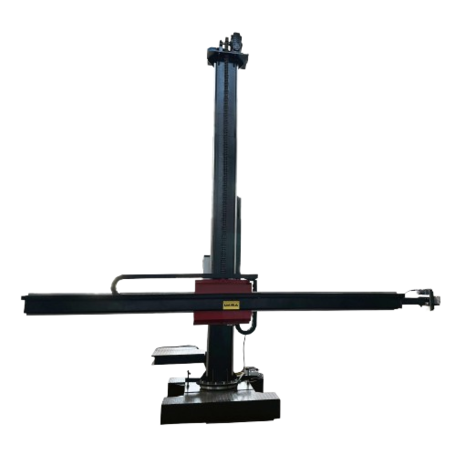
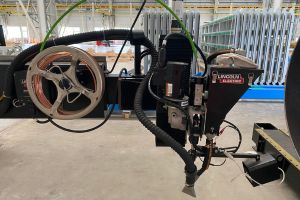
Manipulator can be supplied with SAW, MAG, GMAW and Force-TIG weld processes and integrated to various systems, such as tandem welding,narrow gap welding,etc.
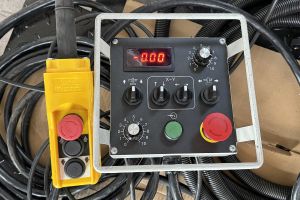
MISA provide wired hand pendant with 50ft long control cable or wireless hand pendant with 300ft working area. We can also provide touch screen , PLC control systems for special purpose project requirements.
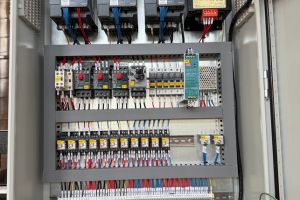
MISA customize the suitable power supply for your machine,from 110v to 600v, we know your Industrial input voltage and electrical requirements. And different standard, such as the safety rules , cable color,etc.
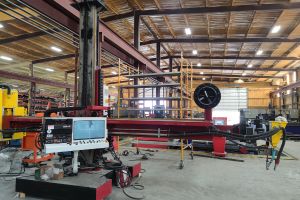
Camera system can be monitoring not only SAW, but also MAG and TIG.
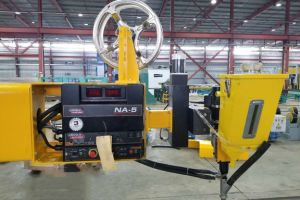
Cross slide is for fine adjustment of welding torch, can be programed by PLC. The conrner mechanism is for switching the welding torch for Longitudinal Seam & Circular seam.
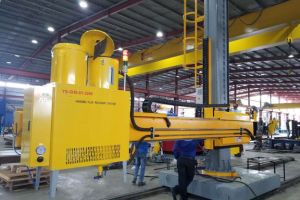
Flux recovery system using for submerged arc welding, with flux feeding,recovering, heating and screening function.
Column and Boom Welding Manipulators are advanced industrial machines designed to provide precise and automated positioning of welding heads over large or complex workpieces. Unlike standard welding manipulators, which may offer limited horizontal or vertical travel, a column and boom system combines a vertical column with a horizontal boom, allowing the welding torch to move freely in multiple directions without repositioning the workpiece. This architecture ensures high-quality, repeatable welds across long seams, circular joints, and elevated or hard-to-reach areas.
The importance of column and boom manipulators is particularly evident in industries dealing with large-diameter pipes, pressure vessels, structural steel, wind tower sections, and shipbuilding components. By maintaining consistent torch alignment, controlling heat input, and enabling automation integration, these manipulators significantly enhance welding efficiency, reduce operator fatigue, and minimize rework.
The core of a Column and Boom Welding Manipulator is its structural design, which combines a heavy-duty vertical column with a horizontal boom to allow precise multi-directional movement. The column provides controlled vertical lift, while the boom ensures smooth horizontal travel, enabling the welding head to reach any point on large workpieces without repositioning. Advanced systems may include motorized drives, servo controls, anti-backlash gears, and precision linear guides to guarantee vibration-free and accurate welding movements.
Many systems also integrate mounting platforms for additional welding equipment such as wire feeders, flux recovery units, cameras, and oscillation systems. This allows operators to perform complex welding tasks efficiently and to integrate the manipulator seamlessly into automated production lines.
This structural approach ensures manipulators can handle large-scale components with high repeatability, while maintaining consistent weld quality. Compared to standard manipulators, column and boom systems provide superior flexibility, reach, and integration potential for industrial welding automation.
When selecting a Column and Boom Welding Manipulator, several technical specifications determine its suitability for specific industrial applications. These include vertical stroke, horizontal boom reach, payload capacity, travel speed, positioning accuracy, and automation compatibility. By carefully selecting these parameters, manufacturers can optimize the system for large-scale fabrication, high-precision welding, and repeatable performance.
Modern column and boom manipulators also offer a range of configuration options to meet diverse production needs, including motorized or manual controls, programmable logic controllers (PLC), remote operation, integrated seam tracking, and multi-process welding compatibility.
| Specification | Typical Range | Function / Application |
|---|---|---|
| Vertical Stroke (Column) | 2m – 6m+ | Controls lifting height of the welding head for tall components |
| Horizontal Boom Reach | 2m – 8m+ | Determines the working envelope along long seams |
| Payload Capacity | 50kg – 300kg+ | Supports welding torches, feeders, and auxiliary equipment |
| Travel Speed | Variable, programmable | Ensures accurate weld tracking and seam following |
| Positioning Accuracy | ±0.5mm – ±1.5mm | Maintains consistent weld quality on large components |
| Control System | Manual, Semi-Automated, Fully PLC-Controlled | Allows integration with production line automation and robotic welding |
| Optional Features | Seam Tracking, Oscillation, Cameras, Remote Operation | Enhances process automation, monitoring, and quality control |
By combining the appropriate vertical and horizontal travel, payload capacity, and control system options, a Column and Boom Welding Manipulator can be fully customized to match the complexity and scale of any fabrication project. Such configurations allow integration with additional equipment like rotators, positioners, and welding power sources, making the system adaptable to multi-process welding requirements.
Fabrication shops dealing with large or complex components often face significant challenges during welding operations. Manual welding on oversized workpieces can lead to inconsistent weld quality, high operator fatigue, long production cycles, and increased risk of defects or rework. Additionally, reaching elevated or awkward welding positions can compromise both safety and precision.
By addressing these key challenges, Column and Boom Welding Manipulators help manufacturers achieve measurable improvements in productivity, welding accuracy, and safety. Companies can standardize their welding processes across large-scale projects, reduce labor costs, and improve the overall return on investment for welding automation systems.
MISA Column and Boom Welding Manipulators are engineered for high-performance industrial welding, combining robust structural design with precise motion control to meet the demanding requirements of modern fabrication environments. Each system is built with reinforced steel columns, rigid booms, and precision drive systems to ensure long-term durability, high positioning accuracy, and smooth multi-axis movement.
Whether upgrading existing welding lines or implementing new automated production systems, MISA Column and Boom Welding Manipulators provide a reliable, high-quality solution for industrial fabrication projects. By combining flexibility, precision, and robust engineering, MISA helps customers achieve consistent weld quality, optimized workflow, and improved operational efficiency.
Column and Boom Welding Manipulators are ideal for medium to very large workpieces, including pressure vessels, large pipes, structural steel sections, wind tower components, and shipbuilding panels. The system is designed to handle workpieces that are difficult or unsafe to reposition manually.
Yes. MISA manipulators can be integrated with PLC-based control systems, automated seam tracking, programmable motion profiles, and synchronized operation with rotators and positioners. This allows for fully automated welding processes with minimal manual intervention.
The manipulators support a wide range of welding processes, including Submerged Arc Welding (SAW), Metal Inert Gas (MIG/MAG), Tungsten Inert Gas (TIG), and flux-cored welding, making them versatile for different industrial applications.
Modern systems maintain positioning accuracy within ±0.5mm to ±1.5mm, ensuring consistent weld quality across long seams and complex geometries. High-precision linear guides, servo-controlled drives, and stable boom-column structures contribute to this performance.
Absolutely. MISA offers customizable configurations including adjustable boom length, column stroke, payload capacity, control systems, and optional features like oscillation, cameras, and remote operation. This flexibility allows the manipulator to match specific welding requirements for different industries and project scales.


